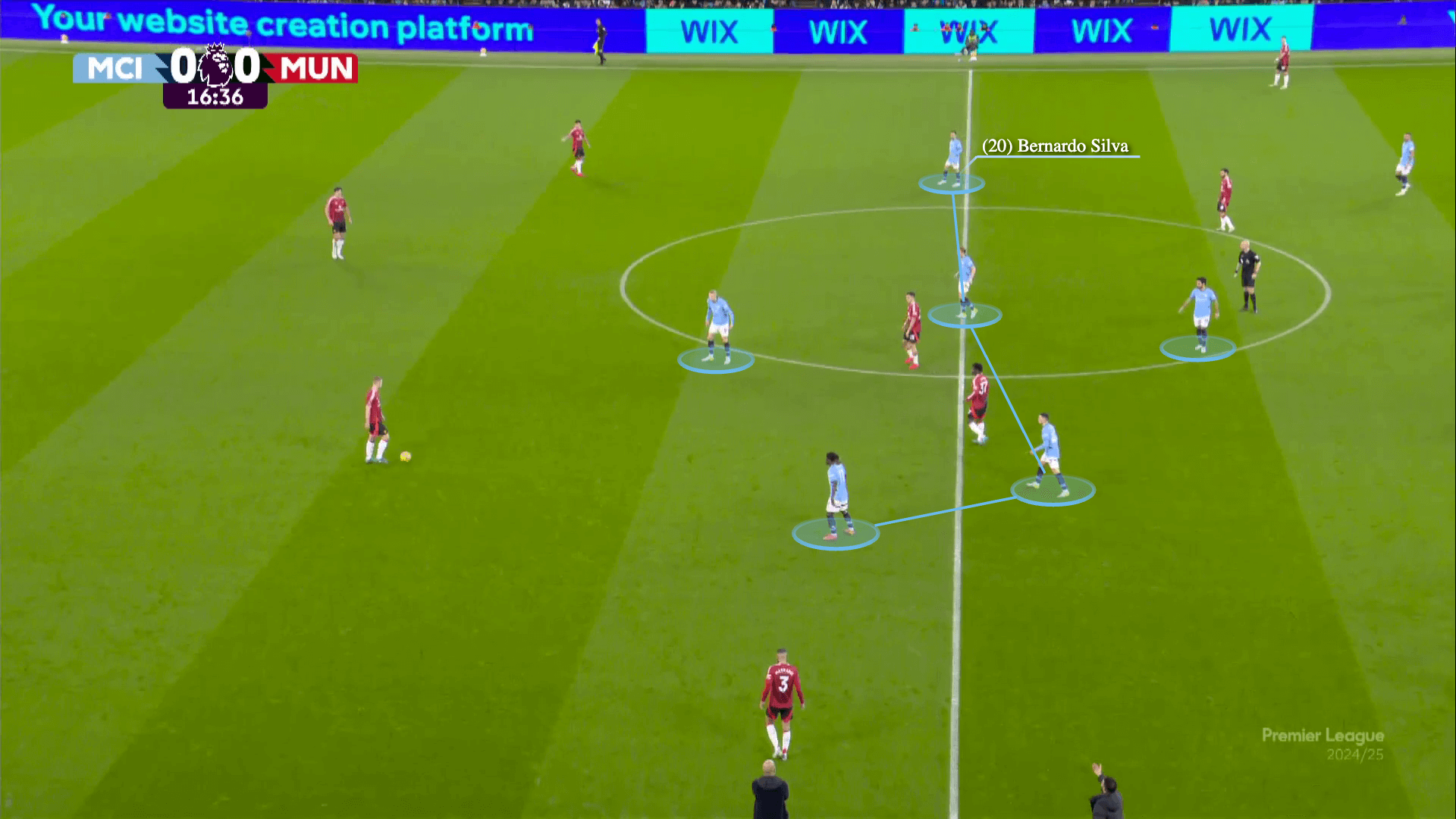Just last week, Manchester United’s head coach Ruben Amorim said his centre-backs must be more aggressive on the ball when the opportunity arises.
“We are in the beginning and the focus is don’t lose the ball with sloppy passes, and they are trying to do that,” said Amorim after United’s 3-2 loss against Nottingham Forest. “They have to have more confidence — not just to take the ball, but also to put the ball between the lines. They are trying to do everything perfect, but sometimes you have to take the risk and we are on this path.”
United’s style under Amorim means extra responsibility for the centre-backs. Their vertical passes are essential in starting the passing combinations that allow the team to play through the opponent.
Amorim’s use of two wing-backs and three forwards in the front line often forces the opposition to adjust their shape without the ball to defend wide overloads, which in turn might create space for the centre-backs to attack depending on the opponent’s tweaks.
Yesterday’s 2-1 victory in the derby against Manchester City showed why it’s important for United’s centre-backs to take the risk when there’s space to attack.
City’s defensive organisation started from a 4-1-4-1, with Bernardo Silva defending the right side of the pitch.

However, Bernardo would regularly drop deeper to support Kyle Walker.

That meant United had space to attack on the outside of City’s midfield, especially when they switched play from the right side, where the opponent’s midfield was tilted.
Here, Bernardo is in a position to support Walker and prevent United from having a two-vs-one when Noussair Mazraoui clips the ball to Bruno Fernandes.

Yet it also creates space for Lisandro Martinez to advance into, with Kevin De Bruyne not positioned to defend the attack because City’s block was focused on the other side of the pitch.


In the first half, United didn’t attack that space enough and Martinez wasn’t aggressive in his positioning. On the few occasions they did, Martinez failed to create a dangerous chance.
In this example, Amad plays the ball to Manuel Ugarte. With Bernardo dropping to defend Diogo Dalot…

… the Uruguay midfielder finds Martinez in the correct space…

… but the centre-back’s pass into Rasmus Hojlund is intercepted by Walker.

The situation changed in the second half when United were searching for the equaliser. Martinez was more aggressive in attacking that space and United exploited it by constantly finding their centre-back.
Here, the positioning of Fernandes and Dalot forces Bernardo to drop deeper when United are building up the attack down their right wing. Amad then dribbles inside and switches play to Martinez, with De Bruyne again not in a position to defend the centre-back.

Martinez then plays the ball to Dalot…

… which attracts Bernardo, allowing United’s left wing-back to find an unmarked Fernandes.

The United captain lifts a ball into the penalty box towards Amad, whose header is saved by Ederson.


In another example, Dalot’s positioning persuades Bernardo to drop and support City’s defensive line. The vacated space is smartly attacked by Martinez, and Ugarte passes the ball to the centre-back…

… who has enough time and space to accurately find Kobbie Mainoo’s run in the penalty area…

… but the midfielder heads the ball wide.

The build-up to the attack shown below foreshadowed United’s winner, and Martinez was central to both.
Again, United are trying to create an overload in the wide area, with Fernandes moving towards the touchline as Ugarte and Martinez combine to find him.

This forces Bernardo to drop and move away from Martinez who is free. Phil Foden is unsure whether to press the centre-back or keep an eye on Ugarte. Accordingly, Fernandes finds Martinez…

… and the left centre-back has enough time to pick his pass. Martinez switches the play towards Antony, but Amad is making a run behind the defence that will be decisive a couple of minutes later.

In the build-up to Amad’s 90th-minute goal, Martinez was once again instrumental. The Argentinian starts the move by playing the ball wide to Dalot, and City’s right-winger, Savinho, drops to support Walker.

Dalot and Fernandes then reset the attack by playing the ball back to Martinez with Bernardo, Foden and Erling Haaland not in a position to press the centre-back.

This allows Martinez time to pick his pass and he finds Amad’s run behind the defence…

… before the Ivorian puts the ball beyond Ederson with his first touch, and scores the winner with his second.


The significance of Martinez’s impact in attack is more than just three points and a victory in the derby: it’s an indication that United are adapting to Amorim’s style on the ball and knowing how to create advantages from it.
Three points and a victory against City but, more importantly, a step in the right direction.





